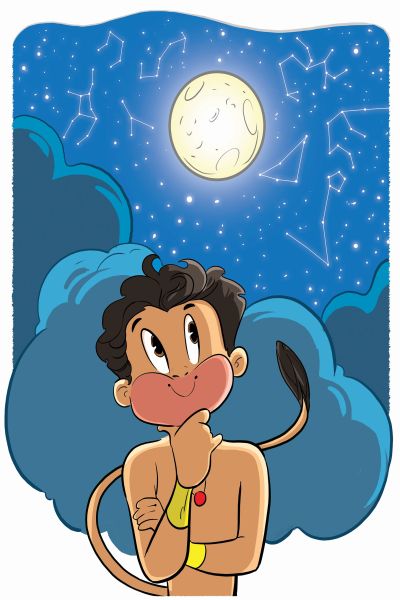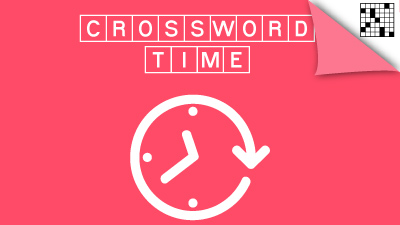
The last time we met Hanuman, he had ticked three things off his bucket list with his father Vaayu’s help: Visit a place where no human has ever been to, at a speed at which no flying machine can fly, to see a view that no bird has ever seen. After the adventure, while the two sit down to have dinner, Hanuman looks at the moon and lets out a laugh.
Vaayu: What happened, Hanuman?
Hanuman:I remembered the story Mom told me about how the moon was cursed, leading to the new moon and full moon cycles.
Vaayu: What’s so funny about it?
Hanuman: Dad, the part where the moon, which is a natural satellite and a celestial object, is cursed for not treating his 27 wives equally sounds quite funny.
Vaayu: It seems like you’ve understood the story quite literally.
Hanuman: Oh! Does that mean there is another meaning?
Vaayu: Yes. Let me explain … Prajapati Daksha, the son of Brahma in his first human incarnation, had many daughters. He arranged for 27 of them to marry Chandra (Moon), on the condition that Chandra treated all with equal love and care. Chandra promised to do so and the marriage took place.
Hanuman: What is the hidden meaning here?
Vaayu: The wives are considered to be the 27 nakshatras (stars) along the moon’s orbit.
Hanuman: But, Dad, aren’t there billions of stars?
Vaayu: Do you know how many days it takes for the moon to go around the Earth?
Hanuman: 30 days?
Vaayu: 27.33, to be exact. These 27 days are referred to as the 27 Nakshatra “divisions”.
Hanuman: Oh, so the 27 wives are actually a reference to the days of the moon’s orbit and the stars or constellations closest to the moon on that particular day.
Vaayu: Correct!
Hanuman: Now that makes sense!
Vaayu: The 27 nakshatras helped humans on Earth calculate time and the changes in seasons. The equal love and care the 27 daughters received is a representation of the number of days the moon spends close to each star. However, in reality, the moon spends more time with specific stars.
Hanuman: Oh, so the others got angry and complained to their father?
Vaayu: Exactly. When Chandra did not pay attention to Daksha’s warning, the latter got enraged and cursed Chandra, saying that he would lose all his beauty.
Hanuman: So, the waning phase represents the loss or deterioration of Chandra’s beauty. Then, what happened?
Vaayu: Chandra sought help from Lord Shiva, who informed him that Daksha’s curse could not be completely lifted. But he granted him a boon: that he would regain his glorious form every 14-15 days. Shiva offered to wear Chandra on his head so that he could hide during the cursed period and reappear when he regained his full form.
Hanuman: So that’s the waxing phase. The day when Chandra is fully covered with the shadow is called Amavasya (No moon day), and when Chandra is in his full form, it is called Poornima (Full moon day).
Vaayu: Yes. After this, Chandra started to spend approximately equal time with all 27 nakshatras, covering about one day with each — approximately 13.20 degrees, which adds up to 360 degrees.
Hanuman: I see … I have one more question, Dad. Is it true that humans on Earth see only one side of the moon and the other side is permanently hidden?
Vaayu: That’s right. It’s because the moon is tidally locked.
Hanuman: What does that mean?
Vaayu: Imagine you and your friend are standing face to face, holding each other’s hands. Then your friend spins around you without letting go of your hands, while you are at the centre. You would always end up facing your friend, wouldn’t you? Now replace your friend with the moon and yourself with the Earth. The force that makes these two celestial objects “hold hands” is the gravitational pull.
Hanuman: Wow! So if I were on that moon, I would always see the same side of the Earth all the time!
Vaayu: Bingo!
Hanuman is amazed by the facts his father has shared and wonders how much more he is yet to learn about the vast space!
Guess who else went to the moon from closer to our times? Well, here’s a clue:
The author is the founder and CEO of Vaayusastra Aerospace, an IIT-Madras incubated ed-tech startup that offers Air Science workshops for children between five and 14 years.
You’ve read this interesting story; ensure you don’t forget to have fun with the shuffle puzzles throughout.











